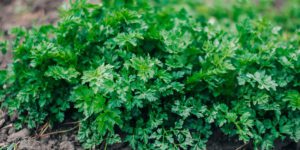Tomato Spotted Wilt Virus is a plant virus that was detected in Australia in the early 1900s and rapidly spread to other areas of the world. It is now common in temperate, subtropical, and tropical regions around the world. The disease affects around 800 different plant species, and has become a major issue for tomato growers especially in areas of Loitoktok, Marura, Rombo, Mashuuru and Kimana areas causing significant losses.
Spotted wilt is caused by thrips, which are small insects that feed on a variety of plants by puncturing the leaves and sucking the plant’s sap. Thrips contract the virus while they are in the larval stage and feed on infected plants. Tomato spotted wilt virus is transmitted by various species of thrips, including the western flower thrips, Frankliniella occidentalis, the onion thrips, Thrips tabaci, and the chili thrips, Scirtothrips dorsalisas. They then transmit the virus as adults, flying from infected plants to healthy plants.
An infected tomato has a number of visible characteristics. Symptoms include bronze-colored or dark-spotted leaves, stunted growth, dark streaking in the plant’s terminal stems, and possible die-back of the plant’s growing tips. The fruit may be deformed or wilted, with a reduction in fruit quality and yield. Ripe fruit has a distorted shape and may be covered with red and yellow ring-like markings. Although TSWV is not seed transmitted, it may cause the discoloration of seed produced on infected hosts. Tomato spotted wilt may affect both the quantity and quality of plant products. Additionally, movement of infected plant material may result in TSWV being introduced into a new setting
SYMPTOMPS ON TOMATOES

Tomato Spotted Wilt Virus
Management
Management of tomato spotted wilt is key to curb spread .In areas where it is known to occur, plant resistant varieties and control western flower thrips and onion thrips when the virus is detected early. Success in using Alonze insecticide to control thrips hence contain TSWV has proved successful in areas of Nkaatu, Mashuuru and farmers are quickly embracing the product in Kimana and Loitoktok.
Before the growing season;
- Plant resistant varieties with the Sw-5 gene.
- Use of virus free transplants from greenhouses and inspect any transplants.
- Manage thrips on transplants.
During growing season
- Avoid planting near crops infected with TSWV.
- Monitor for thrips and tomato spotted virus symptoms
- Manage thrips chemically using ALONZE at a rate of 10ml/20 lts.
- Remove infected plant at seedling stage.
- Control weeds in and around the farm.
After growing season
- Remove and destroy old tomato plants and other host crops.
Control weeds and volunteer crops in fallow field, non -cropped and idle land.







